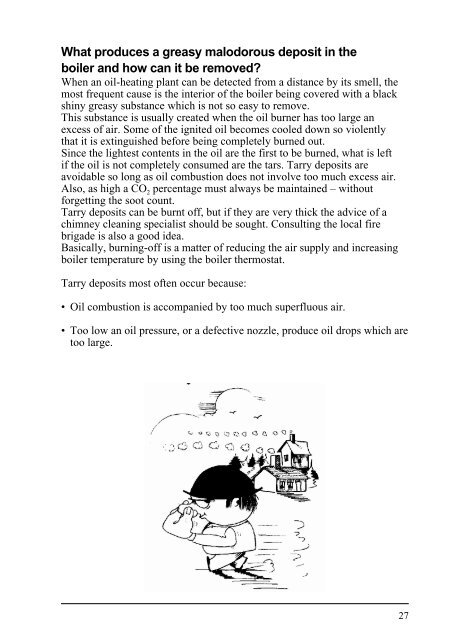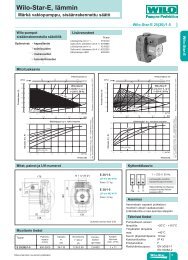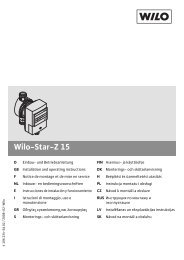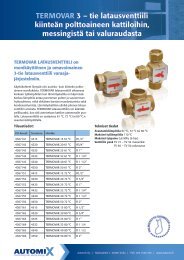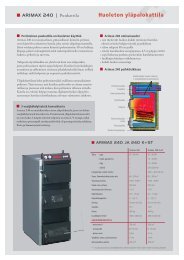Facts worth knowing about Oil nozzles - Danfoss.com
Facts worth knowing about Oil nozzles - Danfoss.com
Facts worth knowing about Oil nozzles - Danfoss.com
- No tags were found...
You also want an ePaper? Increase the reach of your titles
YUMPU automatically turns print PDFs into web optimized ePapers that Google loves.
What produces a greasy malodorous deposit in theboiler and how can it be removed?When an oil-heating plant can be detected from a distance by its smell, themost frequent cause is the interior of the boiler being covered with a blackshiny greasy substance which is not so easy to remove.This substance is usually created when the oil burner has too large anexcess of air. Some of the ignited oil be<strong>com</strong>es cooled down so violentlythat it is extinguished before being <strong>com</strong>pletely burned out.Since the lightest contents in the oil are the first to be burned, what is leftif the oil is not <strong>com</strong>pletely consumed are the tars. Tarry deposits areavoidable so long as oil <strong>com</strong>bustion does not involve too much excess air.Also, as high a CO 2 percentage must always be maintained – withoutforgetting the soot count.Tarry deposits can be burnt off, but if they are very thick the advice of achimney cleaning specialist should be sought. Consulting the local firebrigade is also a good idea.Basically, burning-off is a matter of reducing the air supply and increasingboiler temperature by using the boiler thermostat.Tarry deposits most often occur because:• <strong>Oil</strong> <strong>com</strong>bustion is ac<strong>com</strong>panied by too much superfluous air.• Too low an oil pressure, or a defective nozzle, produce oil drops which aretoo large.27


